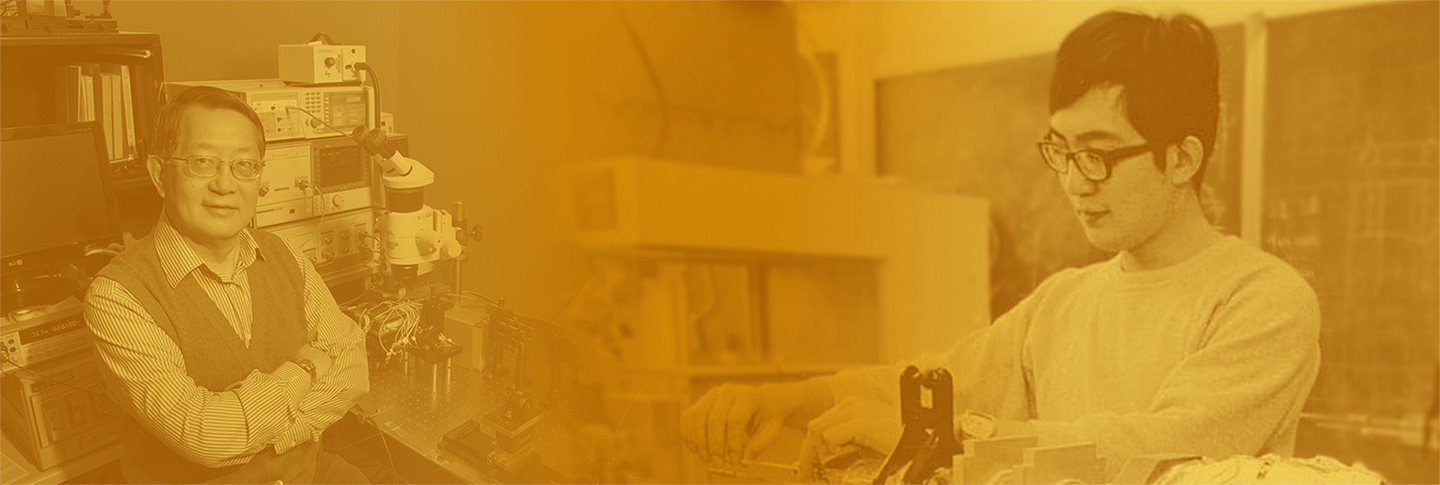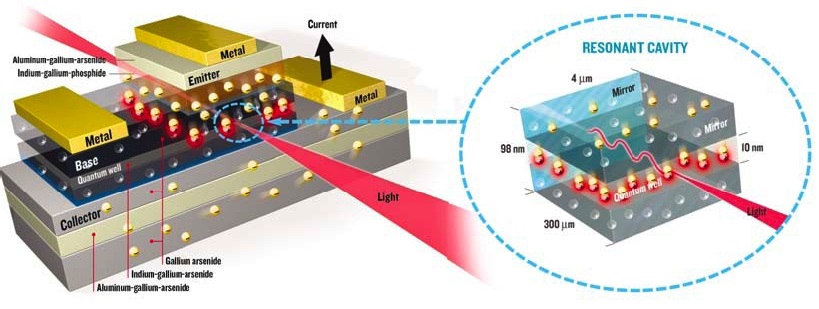

Milton Feng is the Nick Holonyak Jr. Chair Professor of Electrical and Computer Engineering at the University of Illinois at Urbana-Champaign. Prof. Feng was born in Taiwan. He received his B.S degree in electrical engineering from Columbia University (New York) in 1973 and his M.S and Ph.D. degrees in electrical engineering from the University of Illinois, Urbana-Champaign, in 1976 and 1979, respectively.
From 1979 to 1983, he was head of the GaAs material and device group at Torrance Research Center, Hughes Aircraft Company, where he was in charge of ion implantation, AsCl3 VPE, MOCVD, and MBE technology. In 1983, he developed a direct ion-implanted low-noise and power MESFET and MMICs for X-band phase array radar application. Prof. Feng demonstrated the first 60-GHz GaAs amplifiers in 1983. From 1984 to 1986, he worked for Ford Microelectronics, Inc., in Colorado Springs, CO, where he managed the advanced digital integrated circuit development program in 1 K SRAM and 500 gate array.

Since 1991, Prof. Feng has been a professor of electrical and computer engineering and a research professor at the Microelectronics Laboratory at the University of Illinois. Prof. Feng invented the pseudomorphic HBT (PHBT), “pushed” the transistor speed boundary toward THz, and demonstrated InP PHBTs with the world’s fastest speed performance (> 800 GHz). Prof. Feng, along with Prof. Nick Holonyak, Jr., demonstrated the first laser operation of a quantum-well-based light emitting transistor (QWLET), a transistor laser (TL). A transistor laser opens up a rich domain of integrated circuitry and high speed signal processing that involves both electrical and optical signals.

The High Speed Device and IC (HSIC) group is aimed at "breakthrough" device and integrated IC and antenna technology toward THz operation. Prof. Feng (With Prof. Holonyak) invented new transistor, Transistor Laser (3 port operation-an electrical input with an electrical output and optical output) in 2004, opened up new frontier in optoelectronics integration as well as fast laser modulation, switching and signal processing.

Prof. Feng has published over 237 papers, 216 conference talks, and been granted 35 U.S. patents in semiconductor microelectronics. He is an IEEE and OSA Fellow, and serves on many executive and strategy committees both in industry and at conferences. In 1989, he received the Ford Aerospace Corporate Technology Outstanding Principal Investigator Award for his contribution of advancing ion implantation GaAs and InGaAs MESFETs into manufacturable millimeter-wave ICs. In 1997, he received the IEEE David Sarnoff Award, and in 2000, he received the Pan Wen Yuan Outstanding Research Award in Microelectronics.

In 2005, he was chosen as the first Holonyak Chair Professor of Electrical and Computer Engineering. In 2006, his transistor laser research paper was selected as one of the top five papers in the 43 year-history of Applied Physics Letters, and also was selected as one of the top 100 most important discoveries in 2005 by Discover magazine. In 2013, he is the recipient of Optical Society R.W. Wood Prize (OSA) for an outstanding discovery, scientific or technical achievement, or invention in the field of optics. He was being recognized for the co-invention and realization of the transistor laser, delivering simultaneously both an electrical signal and a coherent laser output and providing the basis for a revolutionary newer higher speed electrical-photonic integrated circuit. Since 1991, High Speed Device and Integrated Circuits group (HSIC) has been the leader in THz Transistor research and High Speed semiconductor laser research and has already granted 40 Ph.D. and more to come.